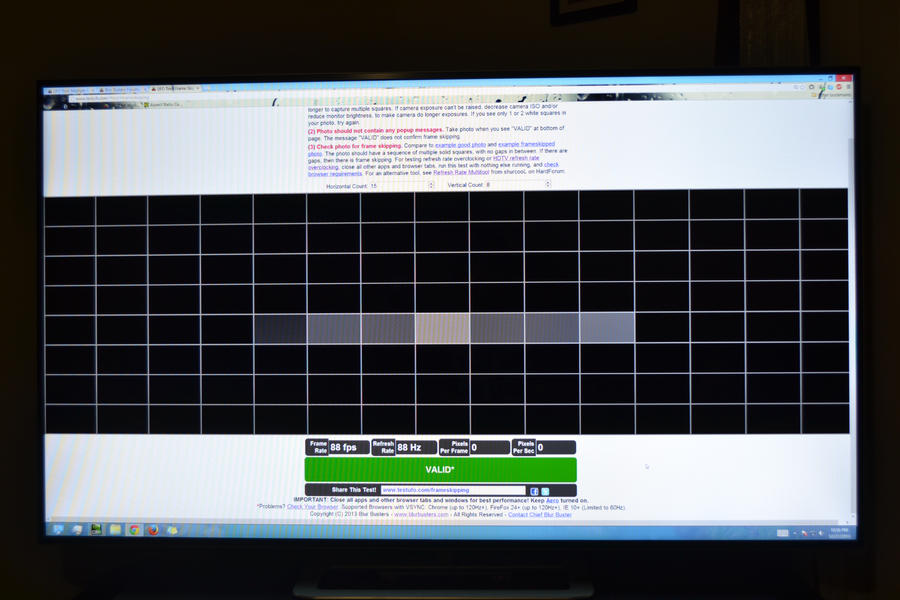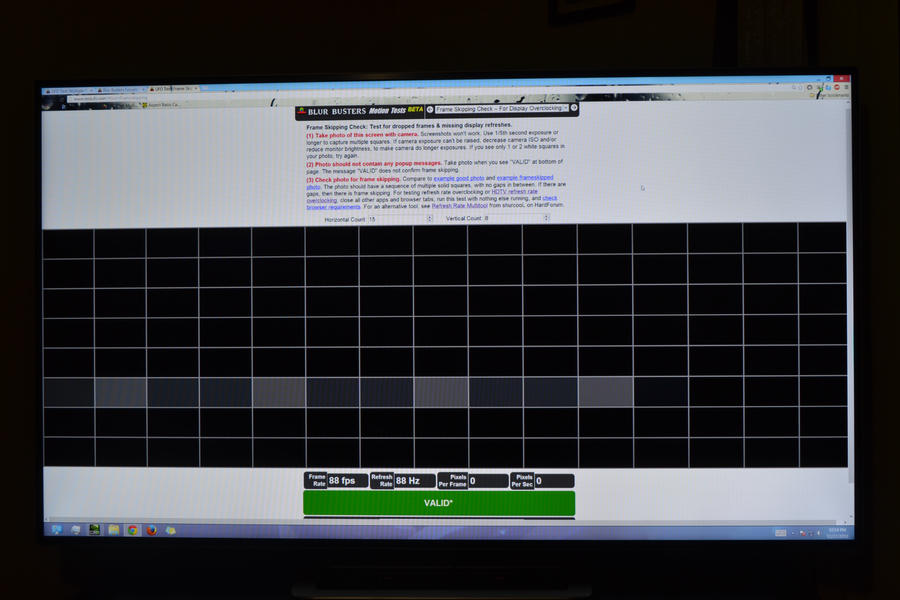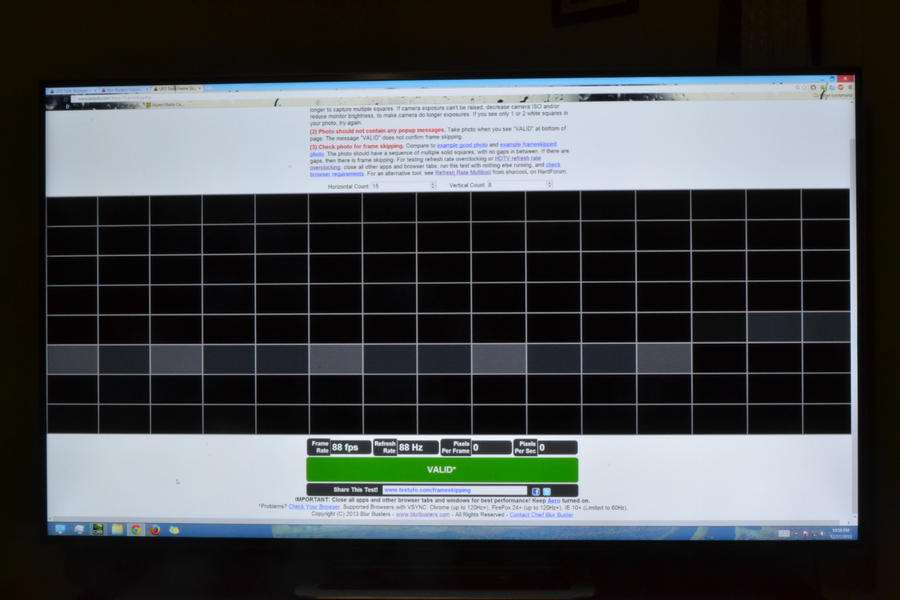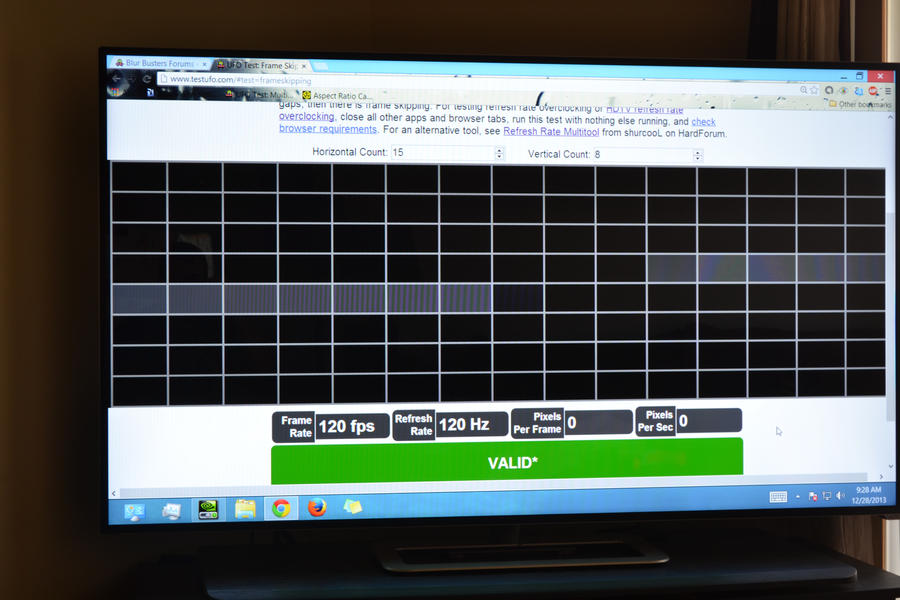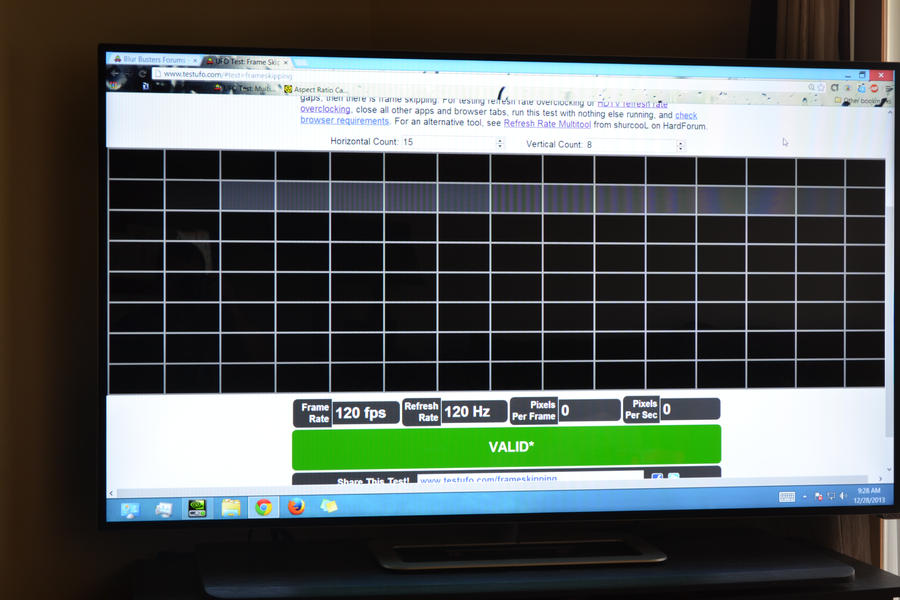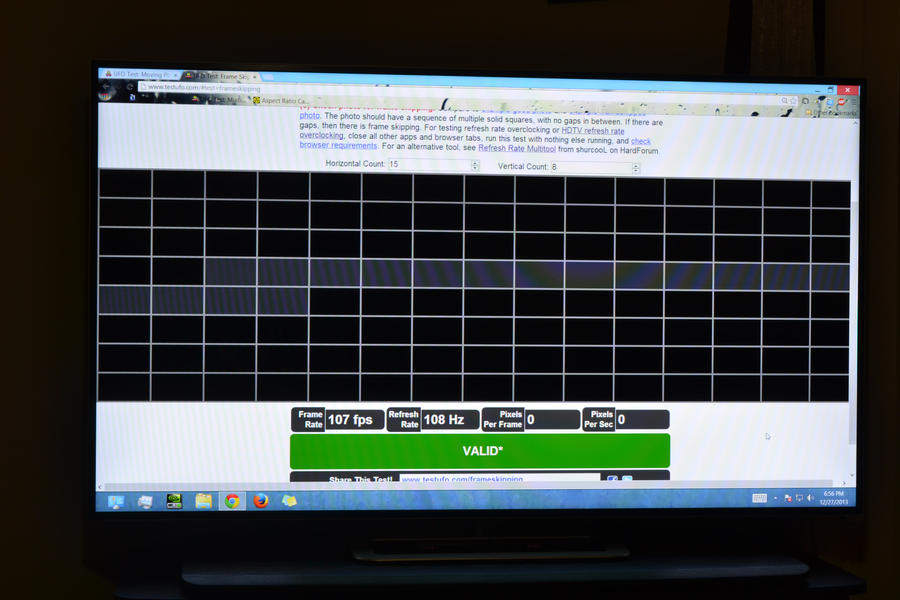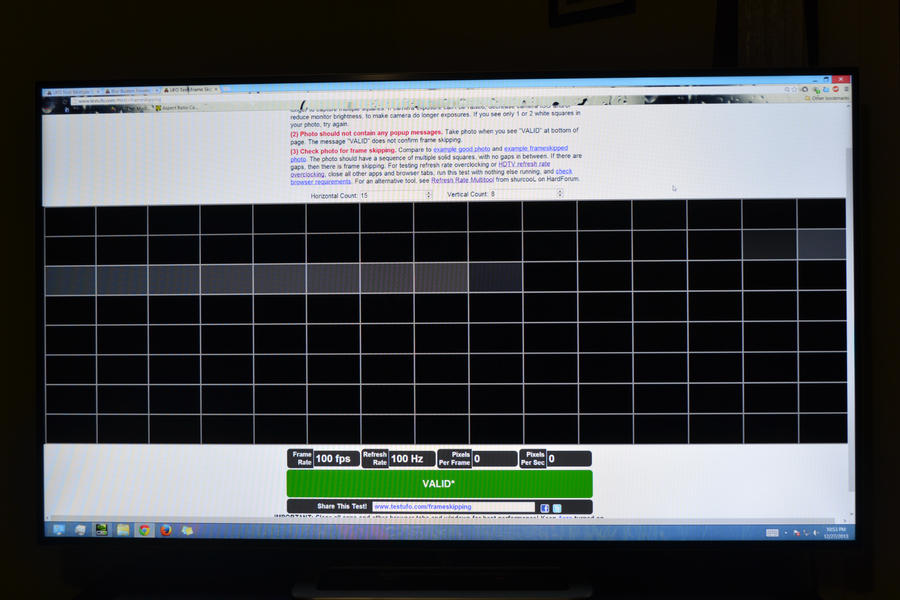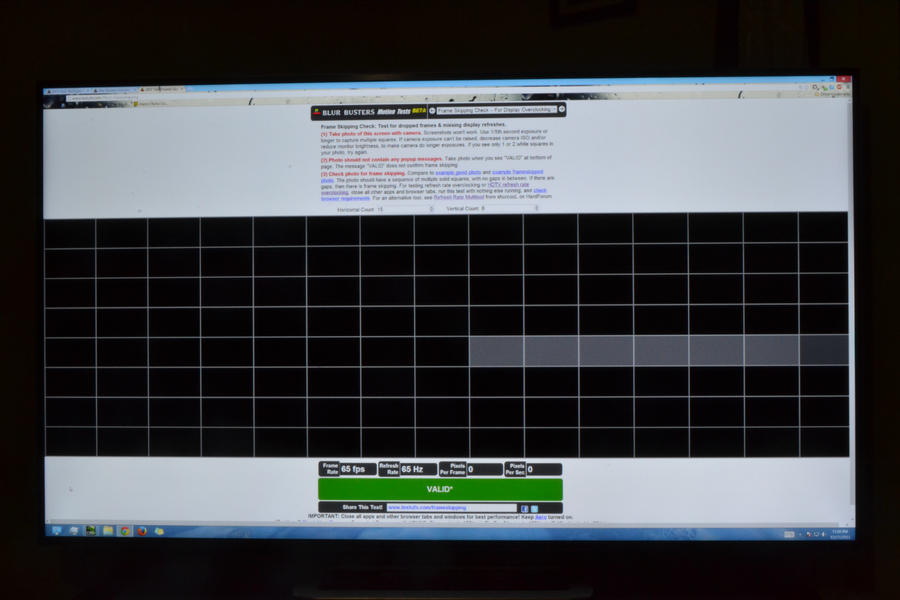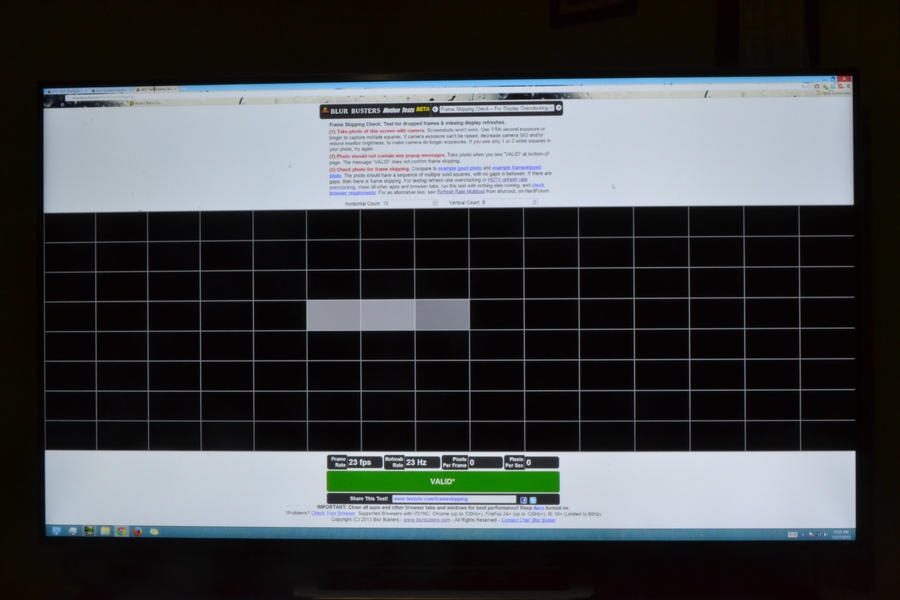Chief Blur Buster wrote:trey31 wrote:Another question. Hypothetically speaking, if turning V-Sync off caused screen tearing above 120hz (say, at 190fps with a 120hz refresh), would setting the resolution to 240hz resolve the screen tearing? I know that 240hz on this TV is dropping every other frame, but even so it still looks as smooth and accurate as 120hz does when moving items around on the desktop.
Aero is always VSYNC ON; it is not currently possible to turn off VSYNC using Aero, so this is a moot question.
That said, if running full screen apps, you will still see tearing even if you get frameskipping. Tearing is refresh-specific, unrelated to frameskipping. Yes, it means half of tearlines become invisible, but the other half of tearlines will still be in the visible non-skipped refreshes. ("Frameskipping" is actually really "refreshskipping" as it's not frameskipping on the GPU framebuffers / videogame framebuffers, but frameskipping on the displays' own internal framebuffer used for refreshes).
Oh -- from the perspective of the display, it is not game-framebuffer-skipping, it's refresh-framebuffer-skipping. Display do not ever know how many frames per second your game is running at! It's just "dumbly" refreshing synchronously at some exact rate (e.g. 120 cycles per second -- 120Hz), and the GPU is sometimes splicing the new frame into the existing refresh as the display scans out -- creating the tearline artifact.
(GSYNC is smarter than this, but that's a separate topic altogether...)
Yes, you do get less input lag at 240Hz (even if frameskipped to 120Hz) than you do at 120Hz (non-frame-skipped).
However, tearing will still be there. Tearing is intrisinically embedded into the refreshes, and thus tearing gets recorded into the monitor's internal frame buffers. It's like multiple videogame frames spliced-above-each-other, into one refresh, and that refresh is buffered into the monitor, and that some buffered refreshes might be frameskipped (ignored).
Yes, that's correct. You can get less input lag with frameskipped 240Hz->120Hz. Each frame is transmitted in 1/240sec, so your input lag is reduced by 1/240sec (4ms) which is actually noticeable to some people -- 4 milliseconds means getting 4 pixels ahead in motion during moderate 1000 pixels/second motion -- or 16 pixels ahead during fast 4000 pixels/second turning motion. These ultra-subtle differences can surprisingly be noticeable to some very sensitive people in some fighter games, FPS games, even emulation).
Although lots of people say sub-20ms differences are not felt (and this is very true for most of population), this isn't true for 100% of population. Remember the 100 meter olympics races; sometimes people cross the finish line only 1ms or 2ms faster than the 2nd place! Mere inches, mere centimers. And likewise, for displays, mere pixels. So, milliseconds actually matter for some elite players...
The faster frame-transmission time is also seen on other displays capable of 240Hz input (frameskipped to 120Hz), such as the SEIKI 4K 50" HDTV, which can display 120 out of 240 when 720p@240Hz is input. Someone on HardForum confirmed they were able to feel the difference during fast-twitch FPS games. As Chief Blur Buster, I certainly believe them!
